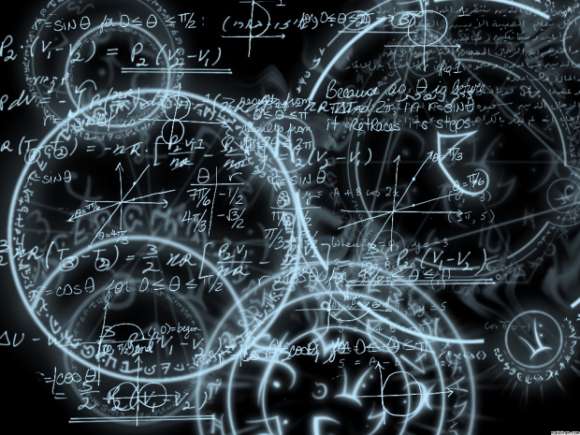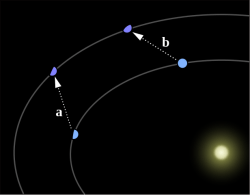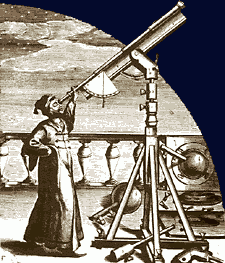How mathematics reveals the nature of the cosmos

Let us discuss the very nature of the cosmos. What you may find in this discussion is not what you expect. Going into a conversation about the universe as a whole, you would imagine a story full of wondrous events such as stellar collapse, galactic collisions, strange occurrences with particles, and even cataclysmic eruptions of energy. You may be expecting a story stretching the breadth of time as we understand it, starting from the Big Bang and landing you here, your eyes soaking in the photons being emitted from your screen. Of course, the story is grand. But there is an additional side to this amazing assortment of events that oftentimes is overlooked; that is until you truly attempt to understand what is going on. Behind all of those fantastic realizations, there is a mechanism at work that allows for us to discover all that you enjoy learning about. That mechanism is mathematics, and without it the universe would still be shrouded in darkness. In this article, I will attempt to persuade you that math isn't some arbitrary and sometimes pointless mental task that society makes it out to be, and instead show you that it is a language we use to communicate with the stars.
We are currently bound to our solar system. This statement is actually better than it sounds, as being bound to our solar system is one major step up from being bound simply to our planet, as we were before some very important minds elected to turn their geniuses toward the heavens. Before those like Galileo, who aimed his spyglass towards the sky, or Kepler discovering that planets move about the sun in ellipses, or Newton discovering a gravitational constant, mathematics was somewhat limited, and our understanding of the universe rather ignorant. At its core, mathematics allows a species bound to its solar system to probe the depths of the cosmos from behind a desk. Now, in order to appreciate the wonder that is mathematics, we must first step back and briefly look at its beginnings and how it is integrally tied into our very existence.
Mathematics almost certainly came about from very early human tribes (predating Babylonian culture which is attributed to some of the first organized mathematics in recorded history), that may have used math as a way of keeping track of lunar or solar cycles, and keeping count of animals, food and/or people by leaders. It is as natural as when you are a young child and you can see that you have one toy plus one other toy, meaning you have more than one toy. As you get older, you develop the ability to see that 1+1=2, and thus simple arithmetic seems to be interwoven into our very nature. Those that profess that they don't have a mind for math are sadly mistaken because just as we all have a mind for breathing, or blinking, we all have this innate ability to understand arithmetic. Mathematics is both a natural occurrence and a human designed system. It would appear that nature grants us this ability to recognize patterns in the form of arithmetic, and then we systematically construct more complex mathematical systems that aren't obvious in nature but let us further communicate with nature.
All this aside, mathematics developed alongside of human development, and carried on similarly with each culture that was developing it simultaneously. It's a wonderful observation to see that cultures that had no contact with one another were developing similar mathematical constructs without conversing. However, it wasn't until mankind decidedly turned their mathematical wonder towards the sky that math truly began to develop in an astonishing way. It is by no mere coincidence that our scientific revolution was spurred by the development of more advanced mathematics built not to tally sheep or people, but rather to further our understandings of our place within the universe. Once Galileo began measuring the rates at which objects fell in an attempt to show mathematically that the mass of an object had little to do with the speed in which it fell, mankind's future would forever be altered.
This is where the cosmic perspective ties in to our want to further our mathematical knowledge. If it were not for math, we would still think we were on one of a few planets orbiting a star amidst the backdrop of seemingly motionless lights. This is a rather bleak outlook today compared to what we now know about the awesomely large universe we reside in. This idea of the universe motivating us to understand more about mathematics can be inscribed in how Johannes Kepler used what he observed the planets doing, and then applied mathematics to it to develop a fairly accurate model (and method for predicting planetary motion) of the solar system. This is one of many demonstrations that illustrate the importance of mathematics within our history, especially within astronomy and physics.
The story of mathematics becomes even more amazing as we push forward to one of the most advanced thinkers humanity has ever known. Sir Isaac Newton, when pondering the motions of Halley's Comet, came to the realization that the math that had been used thus far to describe physical motion of massive bodies, simply would not suffice if we were to ever understand anything beyond that of our seemingly limited celestial nook. In a show of pure brilliance that lends validity to my earlier statement about how we can take what we naturally have and then construct a more complex system upon it, Newton developed the Calculus in which this way of approaching moving bodies, he was able to accurately model the motion of not only Halley's comet, but also any other heavenly body that moved across the sky.
In one instant, our entire universe opened up before us, unlocking almost unlimited abilities for us to converse with the cosmos as never before. Newton also expanded upon what Kepler started. Newton recognized that Kepler's mathematical equation for planetary motion, Kepler's 3rd Law ( P2=A3 ), was purely based on empirical observation, and was only meant to measure what we observed within our solar system. Newton's mathematical brilliance was in realizing that this basic equation could be made universal by applying a gravitational constant to the equation, in which gave birth to perhaps one of the most important equations to ever be derived by mankind; Newton's Version of Kepler's Third Law.

What Newton realized was that when things move in non-linear ways, using basic Algebra would not produce the correct answer. Herein lays one of the main differences between Algebra and Calculus. Algebra allows one to find the slope (rate of change) of straight lines (constant rate of change), whereas Calculus allows one to find the slope of curved lines (variable rate of change). There are obviously many more applications of Calculus than just this, but I am merely illustrating a fundamental difference between the two in order to show you just how revolutionary this new concept was. All at once, the motions of planets and other objects that orbit the sun became more accurately measurable, and thus we gained the ability to understand the universe a little deeper. Referring back to Netwon's Version of Kepler's Third Law, we were now able to apply (and still do) this incredible physics equation to almost anything that is orbiting something else. From this equation, we can determine the mass of either of the objects, the distance apart they are from each other, the force of gravity that is exerted between the two, and other physical qualities built from these simple calculations.
With his understanding of mathematics, Newton was able to derive the aforementioned gravitational constant for all objects in the universe ( G = 6.672×10-11 N m2 kg-2 ). This constant allowed him to unify astronomy and physics which then permitted predictions about how things moved in the universe. We could now measure the masses of planets (and the sun) more accurately, simply according to Newtonian physics (aptly named to honor just how important Newton was within physics and mathematics). We could now apply this newfound language to the cosmos, and begin coercing it to divulge its secrets. This was a defining moment for humanity, in that all of those things that prohibited our understandings prior to this new form of math were now at our fingertips, ready to be discovered. This is the brilliance of understanding Calculus, in that you are speaking the language of the stars.
There perhaps is no better illustration of the power that mathematics awarded us than in the discovery of the planet Neptune. Up until its discovery in September of 1846, planets were discovered simply by observing certain "stars" that were moving against the backdrop of all the other stars in odd ways. The term planet is Greek for "wanderer", in that these peculiar stars wandered across the sky in noticeable patterns at different times of the year. Once the telescope was first turned upwards towards the sky by Galileo, these wanderers resolved into other worlds that appeared to be like ours. If fact, some of these worlds appeared to be little solar systems themselves, as Galileo discovered when he began recording the moons of Jupiter as they orbited around it.
After Newton presented his physics equations to the world, mathematicians were ready and excited to begin applying them to what we had been keeping track of for years. It was as if we were thirsty for the knowledge, and finally someone turned on the faucet. We began measuring the motions of the planets and gaining more accurate models for how they behaved. We used these equations to approximate the mass of the Sun. We were able to make remarkable predictions that were validated time and again simply by observation. What we were doing was unprecedented, as we were using mathematics to make almost impossible to know predictions that you would think we could never make without actually going to these planets, and then using actual observation to prove the math correct. However, what we also did was begin to figure out some odd discrepancies with certain things. Uranus, for instance, was behaving not as it should according to Newton's laws.

What makes the discovery of Neptune so wonderful was the manner in which it was discovered. What Newton had done was uncover a deeper language of the cosmos, in which the universe was able to reveal more to us. And this is exactly what happened when we applied this language to the orbit of Uranus. The manner in which Uranus orbited was curious and did not fit what it should have if it was the only planet that far out from the sun. Looking at the numbers, there had to be something else out there perturbing its orbit. Now, before Newton's mathematical insights and laws, we would have had no reason to suspect anything was wrong in what we observed. Uranus orbited in the way Uranus orbited; it was just how it was. But, again revisiting that notion of mathematics being an ever increasing dialogue with the universe, once we asked the question in the right format, we realized that there really must be something else beyond what we couldn't see. This is the beauty of mathematics writ large; an ongoing conversation with the universe in which more than we may expect is revealed.
It came to a French mathematician Urbain Le Verrier who sat down and painstakingly worked through the mathematical equations of the orbit of Uranus. What he was doing was using Newton's mathematical equations backwards, realizing that there must be an object out there beyond the orbit of Uranus that was also orbiting the sun, and then looking to apply the right mass and distance that this unseen object required for perturbing the orbit of Uranus in the way we were observing it was. This was phenomenal, as we were using parchment and ink to find a planet that nobody had ever actually observed. What he found was that an object, soon to be Neptune, had to be orbiting at a specific distance from the sun, with the specific mass that would cause the irregularities in the orbital path of Uranus. Confident of his mathematical calculations, he took his numbers to the New Berlin Observatory, where the astronomer Johann Gottfried Galle looked exactly where Verrier's calculations told him to look, and there lay the 8th and final planet of our solar system, less than 1 degree off from where Verrier's calculations said for him to look. What had just happened was an incredible confirmation of Newton's gravitational theory and proved that his mathematics were correct.

These types of mathematical insights continued on long after Newton. Eventually, we began to learn much more about the universe with the advent of better technology (brought about by advances in mathematics). As we moved into the 20th century, quantum theory began to take shape, and we soon realized that Newtonian physics and mathematics seemed to hold no sway over what we observed on the quantum level. In another momentous event in human history, yet again brought forth by the advancement in mathematics, Albert Einstein unveiled his theories of General and Special Relativity, which was a new way to look not only at gravity, but also on energy and the universe in general. What Einstein's mathematics did was allow for us to yet again uncover an even deeper dialogue with the universe, in which we began to understand its origins.
Continuing this trend of advancing our understandings, what we have realized is that now there are two sects of physics that do not entirely align. Newtonian or "classical" physics, that works extraordinarily well with the very large (motions of planets, galaxies, etc…) and quantum physics that explains the extremely small (the interactions of sub-atomic particles, light, etc…). Currently, these two areas of physics are not in alignment, much like two different dialects of a language. They are similar and they both work, but they are not easily reconcilable with one another. One of the greatest challenges we face today is attempting to create a mathematical grand "theory of everything" which either unites the laws in the quantum world with that of the macroscopic world, or to work to explain everything solely in terms of quantum mechanics. This is no easy task, but we are striving forward nonetheless.
As you can see, mathematics is more than just a set of vague equations and complex rules that you are required to memorize. Mathematics is the language of the universe, and in learning this language, you are opening yourself up the core mechanisms by which the cosmos operates. It is the same as traveling to a new land, and slowly picking up on the native language so that you may begin to learn from them. This mathematical endeavor is what allows us, a species bound to our solar system, to explore the depths of the universe. As of now, there simply is no way for us to travel to the center of our galaxy and observe the supermassive black hole there to visually confirm its existence. There is no way for us to venture out into a Dark Nebula and watch in real time a star being born. Yet, through mathematics, we are able to understand how these things exist and work. When you set about to learn math, you are not only expanding your mind, but you are connecting with the universe on a fundamental level. You can, from your desk, explore the awesome physics at the event horizon of a black hole, or bear witness to the destructive fury behind a supernova. All of those things that I mentioned at the beginning of this article come into focus through mathematics. The grand story of the universe is written in mathematics, and our ability to translate those numbers into the events that we all love to learn about is nothing short of amazing. So remember, when you are presented with the opportunity to learn math, accept every bit of it because math connects us to the stars.
Source: Universe Today





















